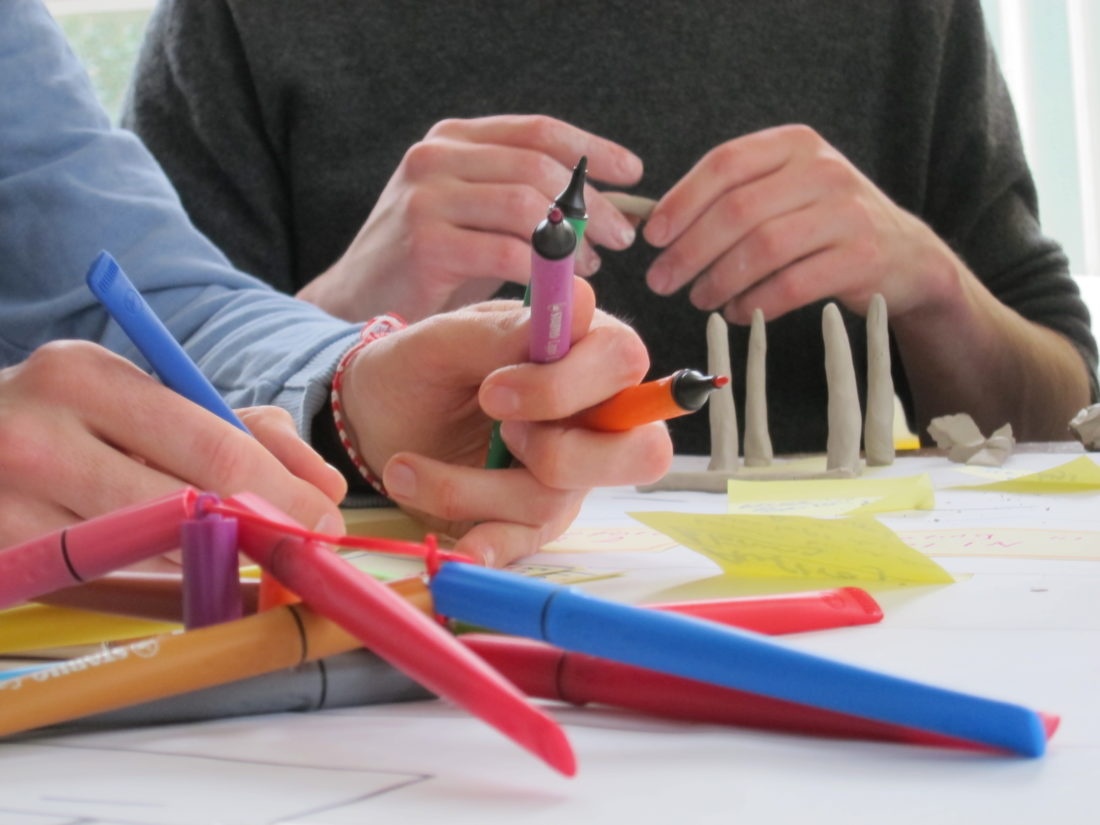
Creative BookSprint – 72 hours. Two Books!?
From the beginning of the project, we have seen MoveMakers as a playground for learning and experimentation for adult education practitioners. At the core of the project was the MoveMakers LAB learning journey – an international learning space for practitioners. The journey consisted of three international LAB Meetings, local Meet-Ups and prototyping time – “Make your Move”. Now as the learning journey in the past, how to share our learnings, insights, further inquires with others to inspire new moves in education and learning?
We have stayed curious, in learning and experimenting: our two upcoming books “MoveMakers on the Move” and “Making New Moves in Education and Learning” came alive in a 3-day BookSprint in the Netherlands. We just wanted to keep on playing and see – what is possible, when a group of people is working on something together for 72 hours? It was fun, playful, inspiring, and frustrating in only a few moments…
Our BookSprint was hosted by Art of Hosting practitioner and Story Activist Mary Alice Arthur and she shares some insights on hosting a creative process like BookSprint.
“Since learning is at the heart of the MoveMakers project, then the form of a “book sprint” and creating two books in three days – might not seem so strange. When I got Benjamin’s email inviting me to host the group, I’d heard of a book sprint, even if I didn’t know much about one. I knew many in the MoveMakers group, as our paths had crossed through other initiatives and communities and I’d hosted them when I worked with the Energy Academy on Samsø Island in Denmark last year. It was easy to say yes.
When I reflect on how we’ve worked together on this project, these things stand out:
- Invite someone to host the process. If you need to be in the content, it can be a big relief to have someone else taking responsibility for the process so you can focus on what you’re best at. Also, if conflict arises, having someone outside the content would be extremely valuable.
- Invite everyone, but go with Open Space principles. Everyone from the MoveMakers group was invited – all 40 – and 12 decided to attend. Some have contributed virtually as well. Open Space Technology would say “whoever comes are the right people”. That’s a good principle to hold. Work with who has passion and commitment to be there. Open Space also has The Law of Two Feet – meaning, go to the place where you are contributing or being contributed to. If that’s not the case – use your two feet to go somewhere else.
- There doesn’t need to be total agreement on everything – you just need enough to get started. If there is a general agreement on the focus of the work you are producing and the audience it is targeted to, the work can get started. Getting started means the energy begins to flow.
- Good enough is good enough to begin with. Every individual started on what they were most interested in and worked collaboratively using googledocs. That meant that others could co-write, but also edit on the go. Good moves to great when people are encouraged with support and input. All of the articles got tighter and more focused when more than one person worked on them.
- Audacious deadlines can lead to audacious thinking, but remember to host yourself. At the beginning of Day 2 someone said: “What if we finish both books tonight?” There were a few groans of alarm, but mostly this thought energised the group and there was a surge of productivity. At the same time, people need to go at their own pace. Some of us need music, some need quiet, some need a run, a nap, food. We worked on the unspoken principle “Take care of yourself so you bring your best”.
- Keep the communication flowing. We set up a hub in a room where we could all clearly see the book structure and who was working on what, with colour-coded sticky notes indicating the status. That gave us a visual reference and real excitement as we could see elements moving to completion. People flowed to the workspaces that most called to them and walked around to find others and offer invitations.
- Being together brings energy and alignment. We lived together, ate together and worked together. This sense of community flowed into the book project and has strengthened the team’s commitment and cohesion.
- Get clear on next steps. It is much easier to keep the energy high when there is a team working together on something. It’s much harder when the team is no longer together, but things still need to be completed. Having a good plan and clear commitments around the next stages will help bring the work to good completion.
Would I do it again? 100% yes! And my role might be different or more focused on holding the space and the pace for the group. But as co-created and intensive learning experiences go, this is a great way to be in it, and on it, together”.
Are you up to host a creative process like “BookSprint” with your colleagues or learners?
Piret, piret@ruumiloojad.ee
Read the full piece from Mary Alice’s blog.
It can also be found in our upcoming book “MoveMakers on the Move:the Story of Our Learning Journey”.

